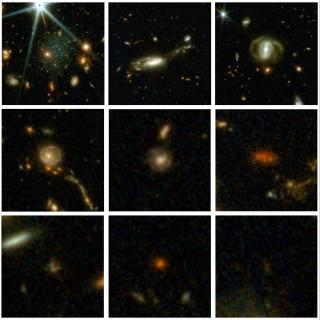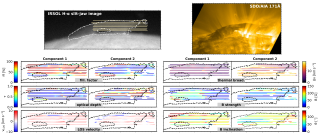More than 18 years of research by an international team, with a strong participation from the Instituto de Astrofísica de Canarias (IAC) has led to the discovery of a special planet, a “super-Earth” orbiting Barnard’s star. This star is a red dwarf, the second nearest to the Earth, 5.96 light years away. Only the triple star system Alpha Centauri is nearer.
The study, published today in Nature magazine, shows the existence of a planet which should have around three times the mass of the Earth (3.2 earth masses) and which orbits the star in 233 days. Barnard’s star is relatively cool, and the super-Earth Barnard b (also GJ 699b) is in orbit close to the so-called “snow line” a distance which marks the limit beyond which water would freeze. If Barnard b did not have an atmosphere its probable temperature would be -170ºC.
Finding this type of planets, with so small a mass and far from the parent star is a challenge for current instruments and search techniques. “For our analysis we have used observations from seven different instruments covering a period of 20 years, which makes this data set of the most extensive every used for precise studies of radial velocity” explains Ignasi Ribas, of the Institute for Space Studies of Catalonia (IEEC) the first author of the article. The analysis of the combined data shows a clear signal that this planet takes 233 days to make a complete orbit round its star. The signal shows that the star approaches us and recedes from us at around the velocity at which a person walks (1.2 m/s) and the explanation is that we detect an orbiting planet. “This is the result of a major collaboration organized within the project Red Dots, and includes contributions from teams around the world, including semi-professional astronomers coordinated by the AAVSO (American Association of Variable Star Observers)” explained Guillem Anglada-Escudé, of Queen Mary University of London, the co-director of this work.
Among the observatories which have collaborated to make this discovery possible are the Roque de los Muchachos Observatory (Garafía, La Palma). In recent years the IAC has carried out observations of Barnard’s star with the HARPS-N spectrograph on the Telescopio Nazionale Galileo (TNG) at this observatory. “Our group at the IAC has contributed with very precise spectroscopy obtained with the HARPS-N spectrograph on the Telescopio Nazionale Galieo on La Palma which has given us very precise measurements of radial velocity, and has also allowed us to characterize the magnetic field of the star” says Jonay González, a Ramon y Cajal researcher at the IAC and a co-author of this publication. “A key feature of this discovery has been to separate the planet’s signal from the signals due to the magnetic activity of the star” states Borja Toledo, a Severo Ochoa-La Caixa pre-doctoral fellow at the IAC and a co-author of the paper. “Instrumentation with high resolution and stability, such as the CARMENES planet finder at the Calar Alto Observatory, Almería, have played a fundamental part in this discovery” concludes Jonay González.
The researchers named, together with Felipe Murgas, Víctor Sánchez Béjar, Enric Pallé, and Rafael Rebolo, are members of the reserach team at the IAC which has participated in this work.
Interesting links:




